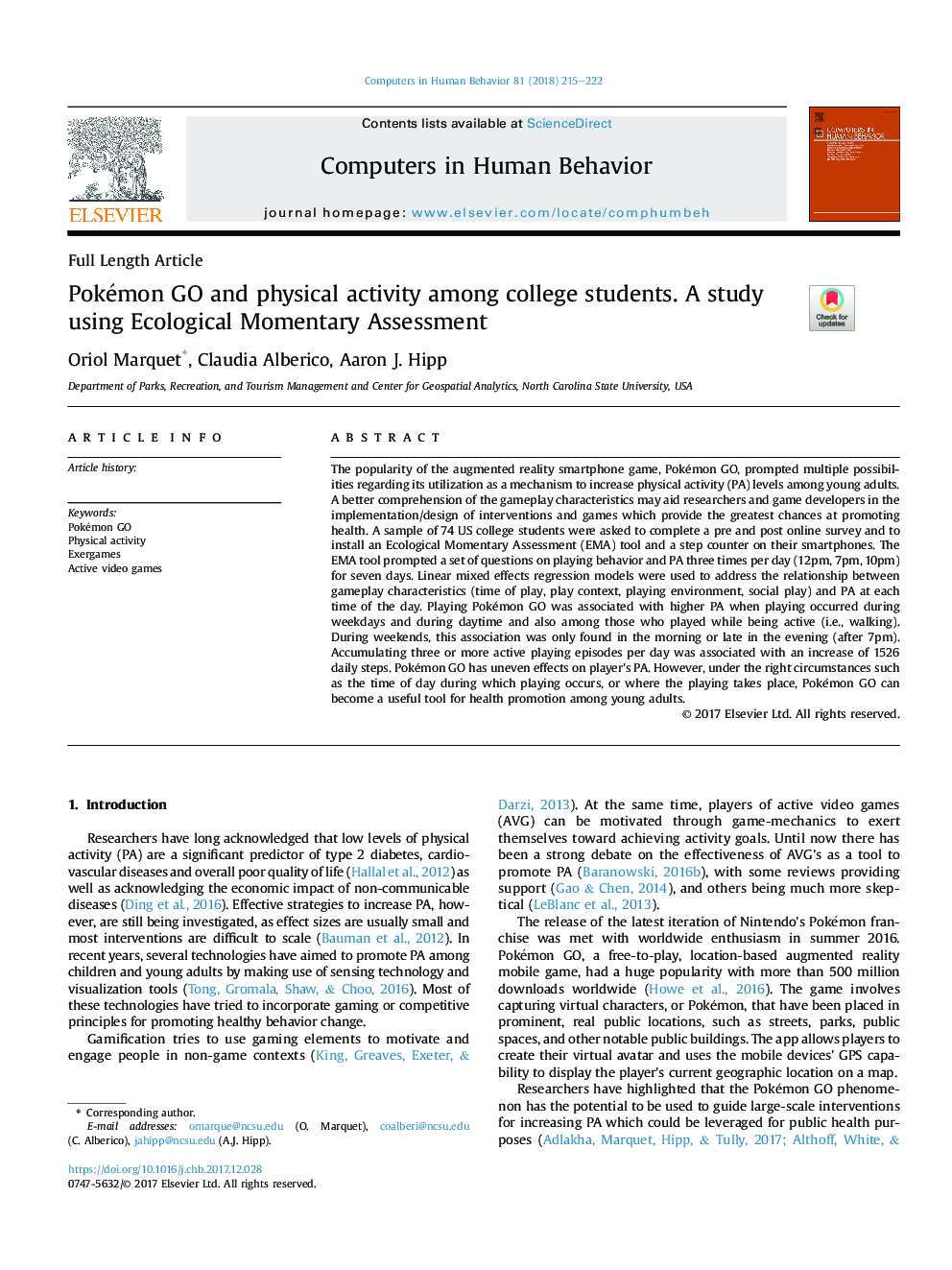| Article ID | Journal | Published Year | Pages | File Type |
|---|---|---|---|---|
| 6836237 | Computers in Human Behavior | 2018 | 8 Pages |
Abstract
The popularity of the augmented reality smartphone game, Pokémon GO, prompted multiple possibilities regarding its utilization as a mechanism to increase physical activity (PA) levels among young adults. A better comprehension of the gameplay characteristics may aid researchers and game developers in the implementation/design of interventions and games which provide the greatest chances at promoting health. A sample of 74 US college students were asked to complete a pre and post online survey and to install an Ecological Momentary Assessment (EMA) tool and a step counter on their smartphones. The EMA tool prompted a set of questions on playing behavior and PA three times per day (12pm, 7pm, 10pm) for seven days. Linear mixed effects regression models were used to address the relationship between gameplay characteristics (time of play, play context, playing environment, social play) and PA at each time of the day. Playing Pokémon GO was associated with higher PA when playing occurred during weekdays and during daytime and also among those who played while being active (i.e., walking). During weekends, this association was only found in the morning or late in the evening (after 7pm). Accumulating three or more active playing episodes per day was associated with an increase of 1526 daily steps. Pokémon GO has uneven effects on player's PA. However, under the right circumstances such as the time of day during which playing occurs, or where the playing takes place, Pokémon GO can become a useful tool for health promotion among young adults.
Related Topics
Physical Sciences and Engineering
Computer Science
Computer Science Applications
Authors
Oriol Marquet, Claudia Alberico, Aaron J. Hipp,
